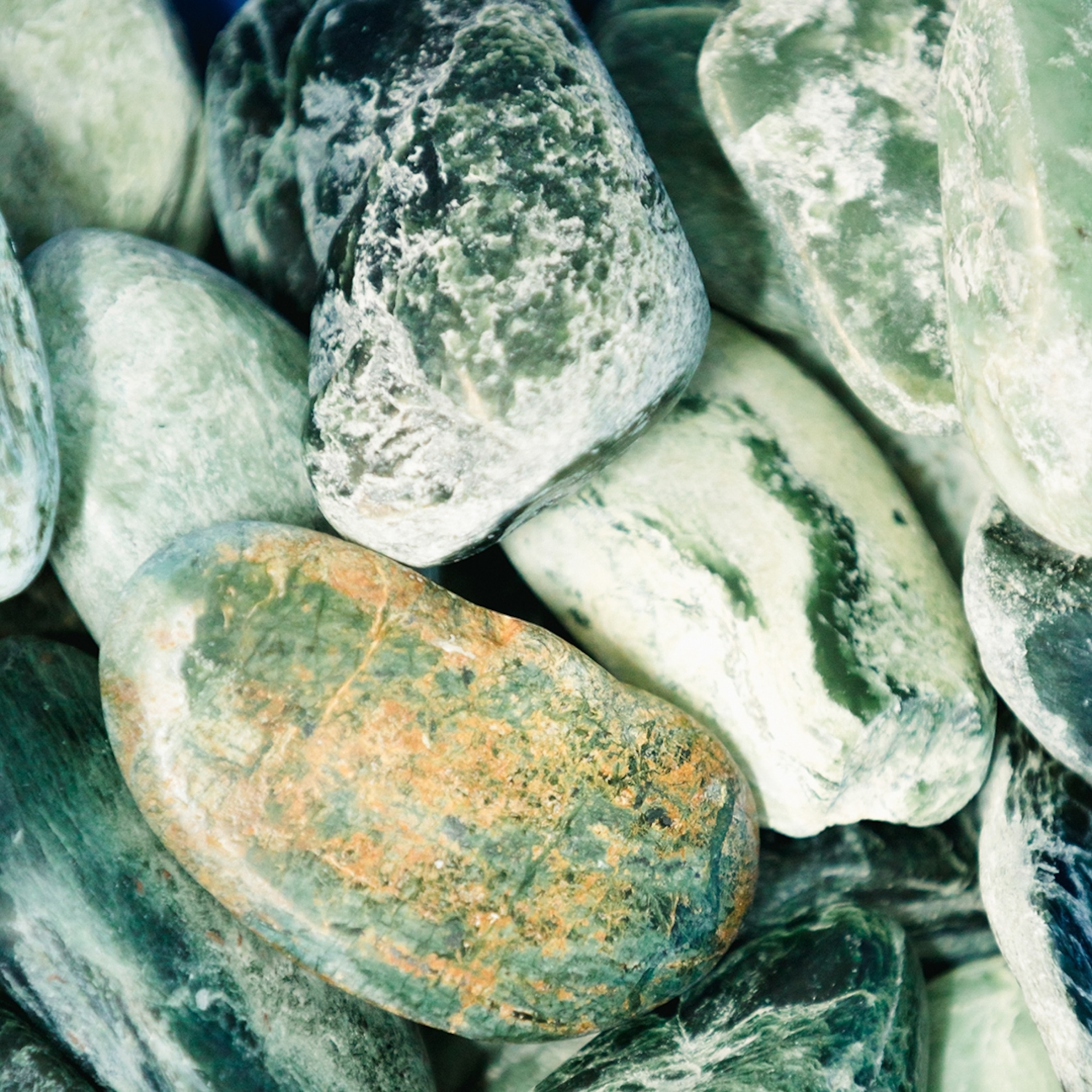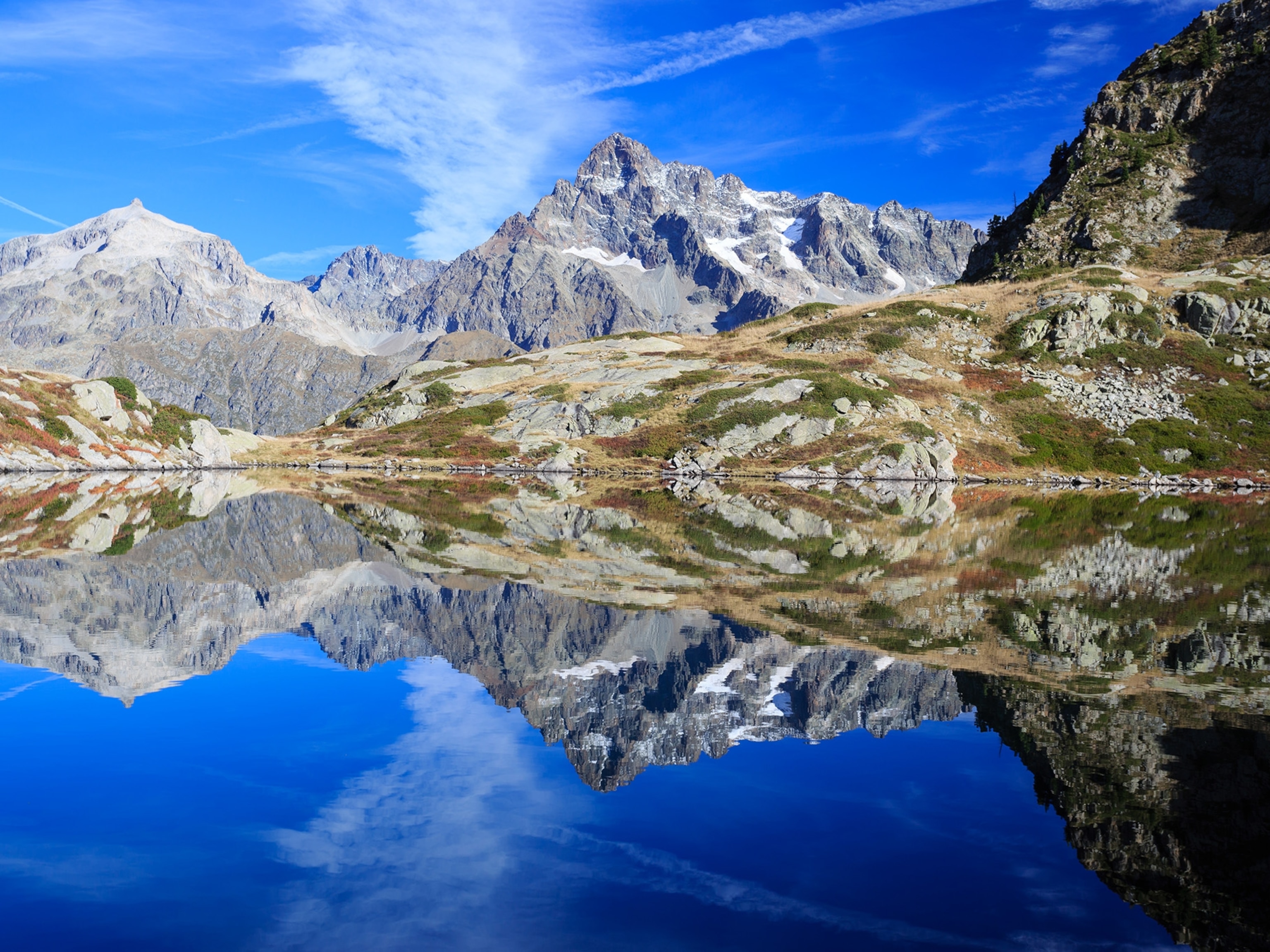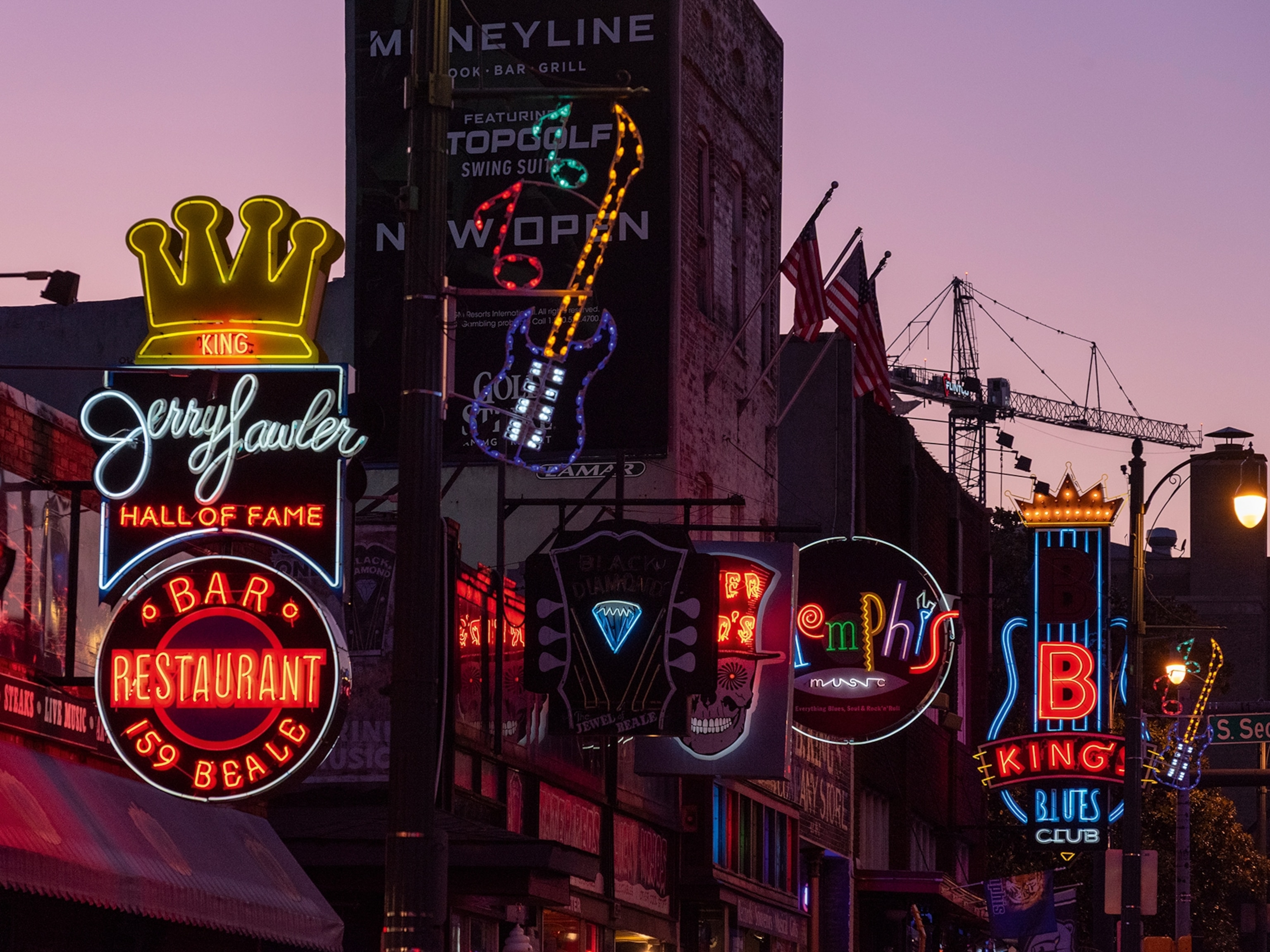
Discovering the simple pleasures of the Wye Valley's riverside routes and market towns
The Wye’s simple pleasures — chattering birdlife, slow-moving boats and walking trails weaving through steep, squirrelly beechwoods to views of the castle-studded Welsh borders — have long had the power to seduce, inspiring authors and artists.
It's 4.30am and the Herefordshire dawn has arrived. Far below me, the River Wye is a silver swathe through high-banked woods. The sky is soft and peach-coloured, the forest a dense, dark jade jungle. Through it all, filling the scene, is a crescendo of squawks, tweets and hoots. “Cup your ears,” says Ed Drewitt, as we face the natural amphitheatre in front of us. “What you’re hearing is the sound of hundreds of birds singing at the same time.”
I’ve met birdwatching guide and local resident Ed on Symonds Yat Rock, a 400ft-high outcrop of cliff-flanked limestone looming over the Wye Valley. On my last visit here, the viewing platform had been packed, but at this hour it’s empty — of humans, at least — and under Ed’s commentary, the wash of birdsong becomes an orchestra of identifiable parts: chiffchaff, firecrest, coal tit, nuthatch. And then something different. “Hear that?” he says, his eyes lighting up with excitement. “Peregrine.”
Within minutes his telescope is trained on the bird, resting on a rockface. I see a flecked breast, a black hood, pointed wingtips. The peregrine falcon is the world’s fastest bird, able to spot prey from a mile away — pity any wood pigeon in the wrong place at the wrong time. I watch the raptor while it scans the view as a citrus sun swells over the hills. On a morning like this it’s hard not to wish for wings of your own to unfurl.
Visitors have been wowed by the panorama here for hundreds of years. The Wye Valley bills itself as the birthplace of British tourism, or the original staycation spot (as they definitely wouldn’t have said in the Georgian era). From 1770 until at least 1830, the so-called Wye Tour attracted poets, artists and regular carriage-loads of other sightseeing ladies and gents. Turner came. Lady Hamilton and Lord Nelson, too. Wordsworth visited twice. For the leisured classes, a trip here was the must-do travel experience of its day, a domestic alternative to the European Grand Tour at a time when the Napoleonic Wars had made continental journeys all but impossible. I can’t help but feel a little pandemic-era symmetry.

The Wye Tour centred not just on a river, but on a book. Reverend William Gilpin’s Observations on the River Wye, which gave a first-person account of the author’s two-day boat trip between Ross-on-Wye and Chepstow in 1770, is considered the first tour guide to be published in Britain. It’s fair to say it caused a splash. Gilpin, who lived in South London, was an artist, cleric and schoolmaster, and his guidebook championed the then-radical idea of finding artistic beauty in the outdoors. Initially only circulated among his London acquaintances (this being an era when sharing your travel journals with friends was the done thing: a kind of old-time blogging), the book was eventually published widely. Stride forward a few decades and an entire industry had sprung up around replicating Gilpin’s trip, with some 20 rival guidebooks now in print.
So, why the Wye? The simple reason is that the winding stretch of river between Ross-on-Wye and Chepstow — a distance of 38 miles by water, though only 19 miles as the peregrine flies — is shudderingly handsome, and not just at sunrise. The Wye rises in the Cambrian Mountains in Wales and flows down to Chepstow and the Severn Estuary, twisting, turning and crisscrossing the England-Wales border at will. By the time it reaches Ross-on-Wye, the waterway is a wide, chuckling thing, passing crumbling castles, wild green escarpments and the kind of pastoral, sheep-chewed scenery that belongs to a slower time. Symonds Yat is today the route’s most celebrated viewpoint, but it’s one of many that conform to the notion of nature as something to marvel at.
“Gilpin promoted the idea of the picturesque. It was a new way of looking at the landscape,” says Anne Rainsbury, the curator at Chepstow Museum, based in a grand, 18th-century townhouse befitting the grandeur of this historic port town. Anne is showing me round a permanent display room dedicated to the Wye Tour. “It wasn’t long before this that people on the European Grand Tour would pull the blinds down in their carriage as they were crossing the Alps. Mountains were seen as unnatural.”
The display room is dominated by a replica of one of the smart canopied boats that carried tourists down the Wye, stopping off at key points of interest, historical and scenic. “Three guineas, which was a lot of money at the time, would get you hire of a boat, two oarsmen and a steersman, who doubled as a guide,” explains Anne. “Gilpin’s book became a kind of bible. People wanted to experience it themselves.”
Some 250 years after Gilpin’s landmark trip, what joys does the region hold for today’s visitors? This portion of the Wye Valley doesn’t draw the kind of attention that falls onto other UK destinations — and sadly you’ll find no more oarsmen or steersmen — but there’s plenty here to make a noise about. And not just the dawn chorus.

Dyke to Devil's Pulpit
‘If you’ve never navigated the Wye,’ wrote Gilpin, ‘you’ve seen nothing.’ It’s a dazzlingly warm midweek afternoon and I’m travelling along the river in a more modest form of watercraft than the early tourists used: a lightweight canoe. The scene in front of me is ageless. Oaks, beeches and alders throng the banks in a chaos of different greens; a salmon leaps, a heron stands in the dappled shallows. Looking up and down the river, nothing else is astir. When I trail my hand in the water, it’s icy cold to the touch.
I’m making the eight-mile journey downstream from Kerne Bridge to Symonds Yat with Stuart Wyley, owner of Wye Adventures. The stretch we’re paddling is very much the go-to spot for self-guided canoe hire — busy at weekends, deliciously quiet on this spring day — and the wide, woody-hilled surroundings make it simple to see why. It’s also an activity conducive to easy conversation. Stuart talks about otters (present, if rarely spotted), and anglers (parts of the Wye are prime fishing territory), and the benefits of homemade nettle soup. “I moved here to escape the corporate world,” he smiles at one point, as we follow the looping meanders of the river. “Working here in the valley is a way of not having a real job.”
It takes four unhurried, smartphone-free hours for us to paddle the route, in which time we pass a few swans, a herd of butterscotch-coloured cows and a group of day-tripping canoeists who have decided to stop paddling and are simply allowing the current to carry them south. To be fair to them, if there’s anywhere that promotes the idea that life is best unrushed, it’s the Wye Valley on a hot day. By the time we haul the canoe from the river, it’s early evening and Stuart’s words are like gospel: the nine-to-five feels like another world altogether.
I’m staying a short distance north of Kerne Bridge in Ross-on-Wye, one of the three historical towns that served as overnight calls on the old Wye Tour route. The tourists of yesteryear traditionally began their trips with a stay here before sailing south past Symonds Yat to spend the night in Monmouth — then and now, a fine little Welsh county town — and finishing their travels the next evening in Chepstow, where Britain’s oldest stone castle still hogs the skyline. And the sections in between? Save for the occasional hamlet, stately home and age-old ruin, today you’ll find just rambling countryside and a river that shimmers in the sun like cut crystal.
The towns themselves retain plenty of period charm. Ross-on-Wye still has a 370-year-old market arcade, a clifftop public garden and at least two hotels that hosted Wye Tour visitors: The Royal once welcomed Charles Dickens and gives a deep view out across the borderlands, while The King’s Head, where I’m staying, is all twisty staircases and oak-beamed dining rooms. The lady in a high-necked blouse who reputedly haunts the inn doesn’t cross my path — not visibly, at any rate — although if she has any sense, she’ll be enjoying the outdoors.
If you’re not in a canoe or kayak, or taking one of the 40-minute pleasure cruises that depart from below Symonds Yat several times a day, the best way to explore the valley is on foot. Short walks can be found almost wherever you go, but there are also two key long-distance paths that snake alongside the river. One is the Wye Valley Walk, which begins right back at the source. The other, and the one I’m sampling, is the Offa’s Dyke Path National Trail, a long-distance hiking route that traces the valley for its southernmost 17 miles.
“There’s a lot of speculation around King Offa, since we have no written information from the time,” says trail officer Rob Dingle as we climb through the squirrelly beechwoods above the river. With the canopy closing in overhead, we hike past ancient yews, beds of wild garlic and centuries-old badger setts. Then Rob stops. “This is part of the dyke right here,” he says, pointing in front of us to an innocuous bank of earth around 18ft high, overgrown with trunks and holly.
Constructed some 1,200 years ago on the orders of the enigmatic Offa of Mercia, the dyke loosely follows the England-Wales border, making it Northern Europe’s longest ancient monument. The theory is that the earthwork was designed to protect Offa’s kingdom from attacks from the west. The National Trail, which clings where it can to the dyke’s course, border-hopping numerous times, celebrates its 50th anniversary this year with a campaign to begin much-needed safeguarding and repair. Running for 177 miles from the Irish Sea to the Severn Estuary, it aims to give people a taste of local landscape, culture and history — as evidenced here in the Wye Valley.
The trail route cuts right through the heart of Monmouth, for example, crossing its medieval gated bridge and passing the now-ramshackle castle where King Henry V was born, although up here in the woods the path is all about being somewhere that’s pleasing on the eye. In the days of the Wye Tour, dedicated panoramic viewpoints were set up along the length of the valley — some of them requiring a serious slog to reach, presumably doubly so in tight Georgian breeches. Rob leads me to one of the choicest spots. “This,” he says, as the tree cover clears to reveal the yawning green of the valley spread before us, “is the Devil’s Pulpit.”
I clamber onto a large rock wedged into the hillside. The sight it reveals is special. More than 800ft below, on a sweeping bend in the river, stands what was the Wye Tour’s most popular set-piece attraction: the roofless relic of Tintern Abbey. Legend has it that from where I’m standing, Satan used to holler down and try to tempt the monks from their holy ways. I don’t know whether he succeeded, but you can’t fault his choice of location. I suspect it was just an excuse for him to take in the view.

Sacred seclusion
Up close, the abbey is a sandstone colossus. For visitors on the Wye Tour, the sight of the abandoned gothic church, with its soaring arches and traceried windows, was a celebrated one. The building dates from the second half of the 13th century and has now spent longer as a ruin (blame the Tudors) than as a place of prayer. In its pomp, around 60 monks and some 150 lay brothers made it a busy place, and the remains of their cloisters, kitchens and infirmary can still be explored.
The site was chosen for its seclusion. Gilpin himself described it as ‘occupying a great eminence in the middle of a circular valley, beautifully screened on all sides by woody hills, through which the river winds its course. A more pleasing retreat could not be found.’ Well, quite. The years have taken their toll on the church, however, and incidents of falling masonry mean it’s now undergoing serious conservation work. On my visit, the resulting lack of footfall along the nave has left the grass inside overrun by a riotous confetti of daisies. Here, the message seems to be, that nature can’t be bossed around.
It’s very easy to romanticise what Gilpin-era tourists would have made of their trips to the Wye Valley, but of course it wasn’t always a pleasant experience. “In those days, travel really wasn’t something you’d undertake lightly,” Anne Rainsbury at Chepstow Museum had told me. “Journals from the time moaned about surly landlords, boulders on the road and poor food.”
The last point is a pertinent one (I’m shown an old hotel tariff offering the less than appetising ‘Chop, potatoes and cheese’), so I’m making the most of being here in 2021 by wrapping up my trip with lunch at The Whitebrook. Hidden away down a narrow single-track lane near Tintern Abbey, and half-hidden by vegetation, this Michelin-starred restaurant isn’t so much based in the region as forming a living, breathing part of it. The produce is organic, often foraged and, where possible, sourced from within three miles of the kitchen.
It’s one of those meals where you find yourself savouring each forkful. The menu uses unusual local ingredients like maritime pine, butter made with jack-by-the-hedge (wild garlic mustard) and Tintern mead sauce — mysterious on the menu, delicious on the plate. They elevate the more familiar likes of asparagus and plaice into dishes that feel gloriously simple and wildly complex at the same time. There’s even a Monmouthshire Chardonnay, which turns out to be just the thing to cue up a three-part dessert featuring the likes of dandelion honey, Wye Valley rhubarb and oak-and-juniper fudge. The Georgians can keep their mutton and spuds.
On his second visit to the valley, in July 1798, the Wye’s biggest Georgian fan, William Wordsworth headed into the hills and penned his famous poem ‘Lines Written A Few Miles Above Tintern Abbey’. In it, he revels in returning to the region (‘Once again do I behold these steep and lofty cliffs … O sylvan Wye! thou wanderer thro’ the woods, How often has my spirit turned to thee!’), and ponders the power that the scenery has held over him even in his absence.
I make my own way to the spot where he’s believed to have written the poem, the Whitestone Woods high on the west escarpment of the valley. A bench has been set up beneath some sycamores, looking out over the countryside. The river furls out in the distance, lazy in the heat, flowing down to Chepstow. I’m alone up here — but not for long. While I’m sitting, a hefty buzzard materialises from the void below and comes to rest on a branch no more than 50ft away. It stares out at the land for a few seconds, shifts its weight, then disappears back into the valley. For the second time in as many days, I find myself wishing I had wings.
Essentials
Getting there & around
Chepstow railway station has direct services from South Wales and the Midlands, connecting to London, the West Country and onwards. Ross-on-Wye and Monmouth are both close to the A40.
In the valley itself, bus 34 runs between Ross-on-Wye and Monmouth (also stopping near Symonds Yat), while bus 69 runs between Monmouth, Tintern and Chepstow.
When to go
With warmer temperatures, spring through to early autumn is the best time to enjoy the area’s natural attractions.
Where to stay
The King’s Head, Ross-on-Wye. Doubles from £85, B&B.
Tintern Abbey Cottage, Tintern. Three-night stays from £440.
Where to eat
The Whitebrook, near Tintern.
The Saracens Head Inn, Symonds Yat.
More info
Visit the Forest of Dean & Wye Valley.
Observations on the River Wye, by William Gilpin (Pallas Athene, £14.99)
How to do it
Wye Adventures offers two-person canoes, to paddle from Kerne Bridge to Symonds Yat, from £55. The Whitebrook has set lunch menus from £47.
Subscribe to National Geographic Traveller (UK)
Follow us on social media
Twitter | Facebook | Instagram







